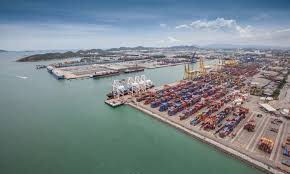Freightos Baltic: Diverging trends in global shipping amid uncertainty over US trade policy
Just two weeks after the 12 May announcement signalling a temporary easing in China–US trade tensions, demand on transpacific lanes has rebounded decisively.

|
Route |
Cost (USD/FEU) |
Changes |
|
Updated on 28 May 2025 |
||
|
Asia - US West Coast |
$ 2,788 |
á 13% |
|
Asia - US East Coast |
$ 4,223 |
á 20% |
|
Asia - Northern Europe |
$ 2,351 |
â 4% |
|
Asia - Mediterranean |
$ 2,985 |
Stable |
Global container freight markets are showing a marked divergence, with transpacific rates rising sharply while transatlantic routes come under renewed pressure amid geopolitical uncertainty.
Just two weeks after the 12 May announcement signalling a temporary easing in China–US trade tensions, demand on transpacific lanes has rebounded decisively. With only eleven weeks remaining before the current suspension of trade restrictions expires in August, US importers are moving swiftly to front-load shipments—triggering a surge in container volumes from Asia.
In response, ocean carriers are rapidly reinstating sailings that were previously withdrawn during April’s seasonal slowdown. Some regional carriers are even launching new transpacific services to capitalise on the booming demand. Nevertheless, vessel and container availability remains uneven, as many assets previously redeployed to other trades have yet to return to Pacific lanes. The resulting equipment and slot shortages are creating temporary imbalances in capacity.
The swift acceleration in activity is already straining port infrastructure. Several major Chinese container hubs are facing mounting congestion, with wait times for berths ranging from 12 to 72 hours. Adverse weather conditions have compounded these delays, squeezing available capacity and exerting further upward pressure on spot container rates.
Transpacific rates have now reached their highest point since late February. A series of General Rate Increases (GRIs) scheduled through mid-June suggests the potential for further significant hikes—possibly running into thousands of dollars per FEU—should current demand persist and port bottlenecks remain unresolved.
In contrast, the transatlantic market is weakening. Ongoing trade negotiations between the US and EU have dampened sentiment, leading to a continued erosion in rates on this corridor.
Read more on Freightos
